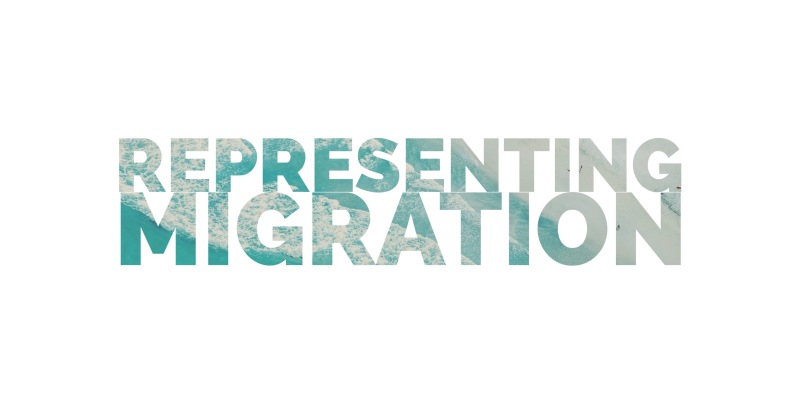I’ve recently received the excellent news that I was successful in a funding bid to the SURE Network scheme to employ 6 University of Sheffield students to work as researchers over the summer on a project that will be led by myself, Sophie Watt (SLC, University of Sheffield) and Casey Strine (SIIBS, University of Sheffield). The project is about how migration, migrants and refugees are represented in the media and contemporary art.
The outcomes of the research will be an article and a short film about the project. In the longer term, we also hope to bring an exhibition of work by Francophone artists to Sheffield, which will explore the ways in which artists have sought to challenge some of the dominant tropes vehicled in press photography around the question of displaced peoples.
 SUMMARY OF RESEARCH PROJECT
SUMMARY OF RESEARCH PROJECT
This research will explore how images of migrants and refugees shape public understanding and opinions of migration. Discourses around the threat posed by migrants and refugees to security, order, national identity and integrity have clearly impacted on the contemporary political landscape (for example Brexit, Trump’s election victory and the rise of populism and ethno-nationalism in Europe). As many scholars have observed, the media play a key role in both conveying and legitimising these political messages about migration. Less attention has been paid, however, to the specifically visual representation of displaced peoples and the impact this has on the public perception of migration – a gap this research will seek to address.
The criminalization and discursive ‘othering’ of migrants and refugees by the mainstream media has been the subject of rigorous and insightful academic research (Ibrahim & Howarth, 2015; Philo, Briant & Donald, 2013). In the field of visual studies, scholars working on so-called ‘atrocity photography’ have dwelled at length on matters such as the ethics of representing vulnerable subjects, the risks of voyeurism, the commoditisation of suffering, the ‘victimal aesthetic’ and what Sontag (1977) called ‘compassion fatigue’. Scholars from the visual arts (such as T.J. Demos [2013]) have explored how artists have challenged standardised visual constructions of migrants and refugees in their practice. The proposed interdisciplinary research project is among the first, however, to draw together insights from these various – yet intrinsically connected – areas of scholarship in order to think more closely about the ways in which migrants and refugees are constructed in visual media, and how these representations impact on opinion and understanding.
In the first instance, the research will identify recurring and dominant tropes in the representation of migrants and refugees. It will examine the use of formal, symbolic and paratextual elements in the visual construction of migrants and refugees, paying attention also to the ways in which the ‘figure of the migrant’ (Nail, 2015) is variously set in – or extracted from – the contexts of migration (such as environmental change, violence and conflict, human rights violations or deleterious socio-political and economic conditions). Techniques of image and discourse analysis will be used to better understand how images of refugees and migrants might solicit certain responses in viewers. We will also consider the ways in which artists have sought to both denaturalise and contest the political and affective viewer responses prompted by hegemonic visual discourse.
An analysis of the visual construction of displaced people in these images will be complemented by empirical research. Students will work with a focus group (including artists) to draw out their responses to – and reflections on – news photographs and selected artworks. Students will also seek to determine to what extent alternative images of migration (or self-representations by artists who are migrants/refugees) might mitigate or change participants’ responses to the dominant tropes afforded by press photography.
 SUMMARY OF RESEARCH PROJECT
SUMMARY OF RESEARCH PROJECT
Wow! Great news Amanda (and Casey, and Sophie). I look forward to hearing more about the project.
Have you heard of “Over Land Over Sea: poems for those seeking refuge”? https://www.morningstaronline.co.uk/a-5ac6-Solidarity-which-sings#.WQoNI-XyvIU
Thanks for this! Going to have a look now 🙂